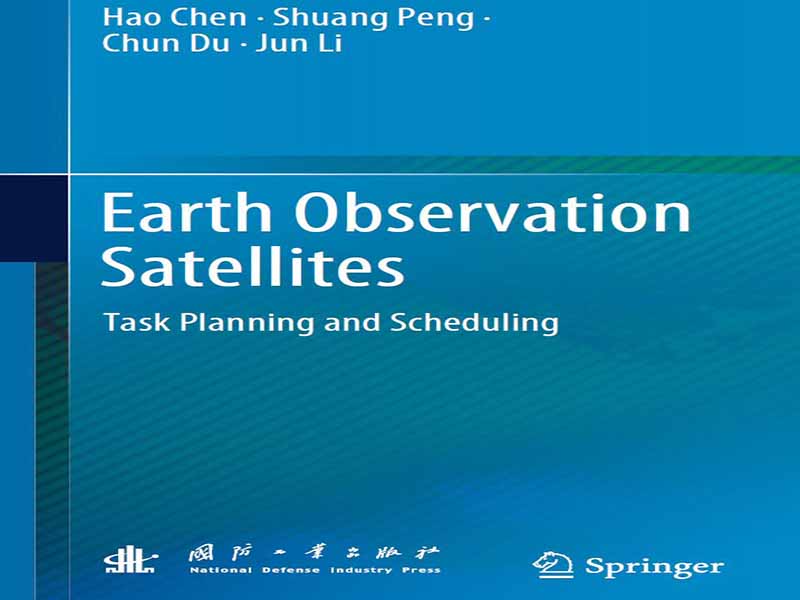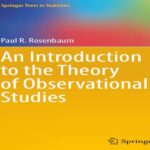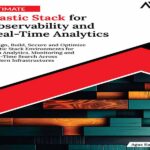- عنوان کتاب: Earth Observation Satellites
- نویسنده: Hao Chen, Shuang Peng, Chun Du, Jun Li
- حوزه: ماهواره
- سال انتشار: 2023
- تعداد صفحه: 196
- زبان اصلی: انگلیسی
- نوع فایل: pdf
- حجم فایل: 6.74 مگابایت
از اولین ماهواره مصنوعی “اسپوتنیک ۱” که توسط اتحاد جماهیر شوروی در سال ۱۹۵۷ پرتاب شد تا اوایل قرن بیست و یکم، فناوری هوافضا در گذار از شبیهسازی آزمایشگاهی به کاربرد عملی، پیشرفت قابل توجهی داشته است. ماهوارههای رصد زمین، به عنوان یکی از مهمترین دستهها در خانواده فضاپیماها، عمدتاً از حسگرهای فضایی برای مشاهده سطح زمین و جو پایینی به منظور دستیابی به اطلاعات مربوطه استفاده میکنند. این ماهوارهها دارای مزایای غیرقابل جایگزینی مانند پوشش گسترده، مدت زمان طولانی، محدودیتهای مکانی و مرزی کم و امنیت بالا هستند. بنابراین، ماهوارههای فضایی نقش مهمی در جنبههای سنجش از دور، پیشگیری و کنترل بلایا، حفاظت از محیط زیست، نقشهبرداری منطقهای، برنامهریزی شهری، ارزیابی کشاورزی و هواشناسی ایفا میکنند. با توسعه سریع صنعت فضایی جهان، تعداد ماهوارههای فضایی به تدریج افزایش یافته، انواع آنها به طور فزایندهای غنی شدهاند و ظرفیت و پیچیدگی سکوها و محمولههای ماهوارهای به طور قابل توجهی افزایش یافته است، اما هنوز هم برآورده کردن نیازهای رو به رشد و متنوع رصد زمین در بخشهای مختلف دشوار است. چگونگی توسعه کارآمد و منطقی برنامههای رصد زمین روزانه ماهوارهای و استفاده کامل از قابلیتهای رصد زمین ماهوارهای، به منظور افزایش اثربخشی کلی سیستمهای رصد زمین، یک موضوع کلیدی است که باید در حوزه فضا به آن پرداخته شود.
این کتاب به هشت فصل تقسیم شده است. در میان آنها، فصلهای ۱ و ۲، مروری بر فناوریهای کلیدی و وضعیت تحقیقاتی برنامهریزی وظایف برای ماهوارههای رصد زمین ارائه میدهند و چالشهای ناشی از عناصر مختلف در سیستم ماهوارهای رصد زمین برای برنامهریزی و زمانبندی را تجزیه و تحلیل میکنند. فصلهای ۳ تا ۶ مدلها و الگوریتمهای زمانبندی وظایف متمرکز EOS را تحت شرایط قطعی، سناریوهای پویای روشهای زمانبندی مجدد وظایف EOS، مدلها و الگوریتمهای زمانبندی وظایف توزیعشده EOS و مدلها و الگوریتمهای زمانبندی وظایف مستقل داخلی EOS معرفی میکنند. فصلهای ۷ و ۸ معماری، عملکردهای اصلی و رابطهای تعامل انسان و کامپیوتر سیستمهای معمول زمانبندی و برنامهریزی وظایف ماهوارهای را از منظر کاربردهای عملی معرفی میکنند و به روندهای فناوری آینده میپردازند.
تقسیم کار در نگارش این کتاب به شرح زیر است: فصل… ۱: هائو چن، شوانگ پنگ، چون دو و جون لی؛ فصل ۲: هائو چن؛ فصل ۳: هائو چن و چون دو؛ فصل ۴: چون دو و هائو چن؛ فصل ۵: شوانگ پنگ؛ فصل ۶: شوانگ پنگ و هائو چن؛ فصلهای ۷ و ۸: هائو چن و شوانگ پنگ. هائو چن و شوانگ پنگ مسئول سازماندهی، یکپارچهسازی و بررسی این کتاب بودند. تهیه این کتاب همچنین توسط گروه تحقیقاتی ما پشتیبانی شده است. با تشکر از پروفسور وی شیونگ، پروفسور نینگ جینگ، پروفسور لوئو چن و پروفسور ژینونگ ژونگ.
در تهیه این کتاب از منابع مرتبط سالهای اخیر نیز استفاده شده است و از آنها قدردانی میشود.
From the first artificial satellite “Sputnik 1” launched by the Soviet Union in 1957 to the early twenty-first century, aerospace technology has achieved significant progress in the transition from the laboratory simulation to the practical application. As one of the most important categories in the spacecraft family, earth observation satellites mainly use spaceborne sensors to observe the earth’s surface and lower atmosphere in order to obtain relevant information. It has irreplaceable merits such as wide coverage, long duration, little spatial and boundary limitations, and high security on stuff. Therefore, the EOSs are playing a significant role in the aspects of remote sensing, disaster prevention and control, environmental protection, territorial mapping, urban planning, agriculture assessment, and meteorology. With the rapid development of the world space industry, the number of EOSs has gradually increased, the types are increasingly rich, and the capacity and complexity of satellite platforms and payloads have increased significantly, but it is still difficult to meet the increasing and diversified earth observation requirements of various sectors. How to efficiently and reasonably develop daily satellite earth observation programs and make full use of satellite earth observation capabilities, so as to enhance the overall effectiveness of earth observation systems is a key issue that needs to be addressed in the space field.
The book is divided into eight chapters. Among them, the Chaps. 1 and 2, provide an overview of the key technologies and research status of task planning for earth observation satellites and analyze the challenges posed by various elements in the earth observation satellite system for planning and scheduling. The Chaps. 3–6 intro-duce the centralized EOSs task scheduling models and algorithms under determin-istic conditions, dynamic scenarios of EOSs task rescheduling methods, distributed EOSs task scheduling models and algorithms, and EOSs onboard autonomous task scheduling models and algorithms; The Chaps. 7 and 8 introduce the architecture, main functions and human–computer interaction interfaces of typical satellite task scheduling and planning systems from the perspective of practical applications, and look into future technology trends.
The division of work in writing this book is as follows: Chap. 1: Hao Chen, Shuang Peng, Chun Du and Jun Li; Chap. 2: Hao Chen; Chap. 3: Hao Chen and Chun Du; Chap. 4: Chun Du and Hao Chen; Chap. 5: Shuang Peng; Chap. 6: Shuang Peng and Hao Chen; Chaps. 7 and 8: Hao Chen and Shuang Peng. Hao Chen and Shuang Peng were responsible for the organization, unification and review of this book. The preparation of this book was also supported by our research group. Thanks to Prof. Wei Xiong, Prof. Ning Jing, Prof. Luo Chen, and Prof. Zhinong Zhong.
Relevant literature from recent years has also been consulted in the preparation of this book and is gratefully acknowledged.
این کتاب را میتوانید از لینک زیر بصورت رایگان دانلود کنید:
Download: Earth Observation Satellites




































نظرات کاربران